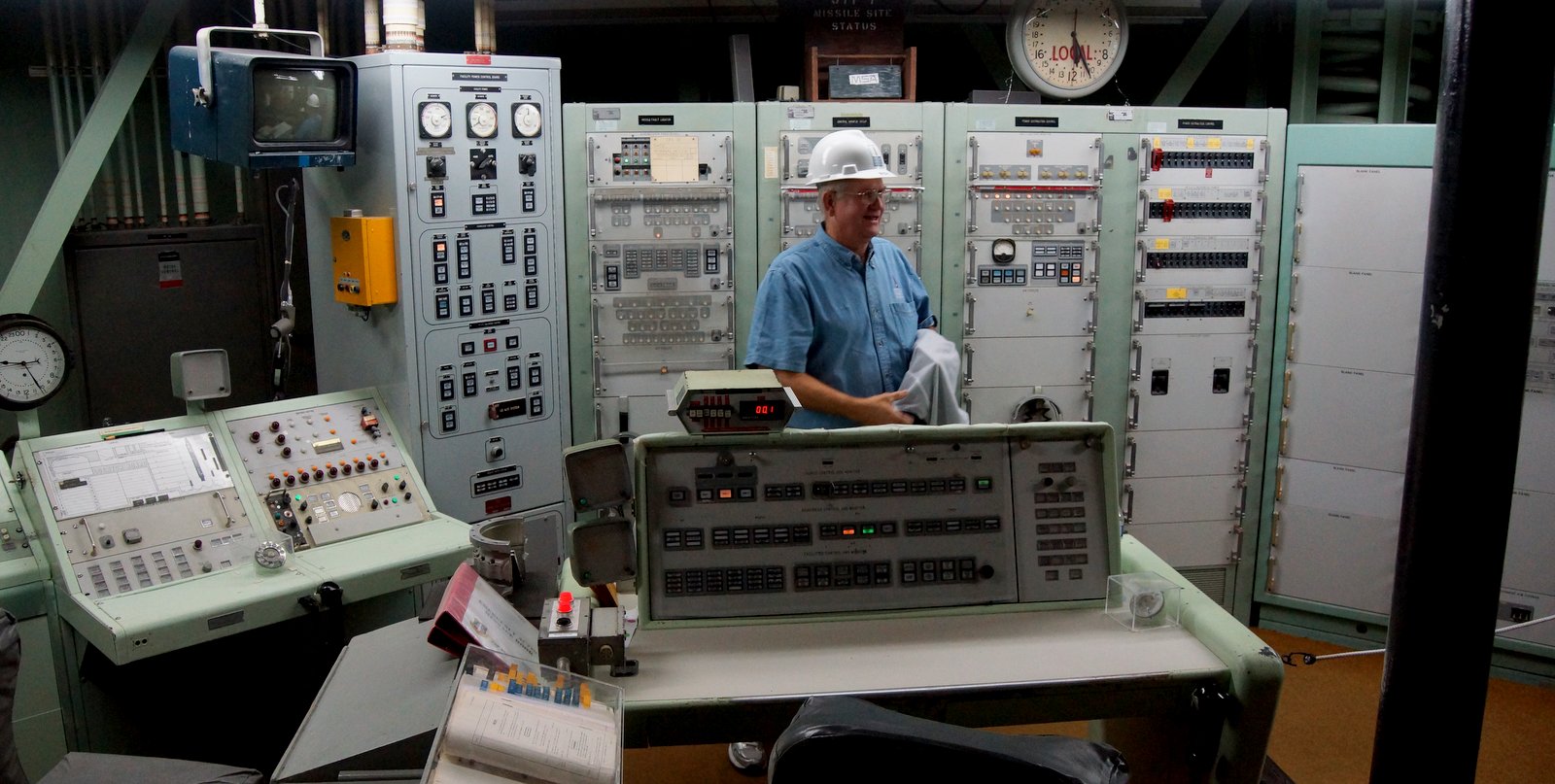We visited the highly recommended Titan Missile museum today in Green Valley, AZ, 25 miles south of Tucson. I discovered I knew very little about this part of the cold war.
Looking back, it was a miracle the MAD (Mutual Assured Destruction) approach worked and did not result in massive devastation. Each Titan missile carried a single warhead with a yield greater than all of the bombs dropped in World War II, including the two atomic bombs dropped on Japan. In total, there were 54 Titan missile complexes just like the one we visited.
Our guide, Roy, did a fantastic job of showing us a little of what life was like for the four-man teams that worked in each complex. I'm pretty sure I could never perform such a job. As he said, if the launch command came, the world was already at war (we presumably would only launch in retaliation to a first strike).
The number of safety checks in place was impressive. There were about five different antennas for communication, and codes had to be authenticated and cross-checked before starting any launch sequence. There was no way to launch without two people turning keys simultaneously and that was after the technician keyed in a code to open the fuel valve on the missile.
The cableway joining the control room to the missile silo was suspended through springs (as was the control room and most sensitive equipment) seen here in large cylinders every ten feet or so.
One of the strangest things was the "No Lone Zones". I guess this was to make sure no one was able to sabotage the system.
The missile fuel and oxidizer simply had to come into contact to ignite - no match necessary. Launching the missile really amounted to starting the pumps squirting the two components into the nozzle and away she went. Of course, if the missile ever sprung a leak - look out! Still, the fuel and oxidizer in the Titan II was a big improvement over the liquid oxygen used in the Titan I and it reduced launch time from 45 minutes to under a minute.
One thing we found about southern Arizona (at least at this time of year) is that there is a lot of wind. Continuous, unrelenting wind everywhere we went.
David is standing next to two of the eight "tipsies" (doppler radar intrusion detectors) that create an invisible fence around the silo door.
We passed miles of pecan groves on the way to the museum. On the way home, we had to stop. The candied pecans were a special treat. Joani seems fascinated by the lollipops with bugs embedded - I just hope she doesn't develop a taste for them!
A pecan is a member of the hickory genus and is not truly a nut. It is technically a drupe (or stone fruit- like a peach). Number one producer is Georgia, followed by Texas, New Mexico and then Arizona. They need a humid hot summer - I'm not sure how that works in Arizona and New Mexico.
It is easy to see that they prune the trees mechanically.
The scenery was beautiful which helped me to ignore those crosswinds.


























No comments:
Post a Comment